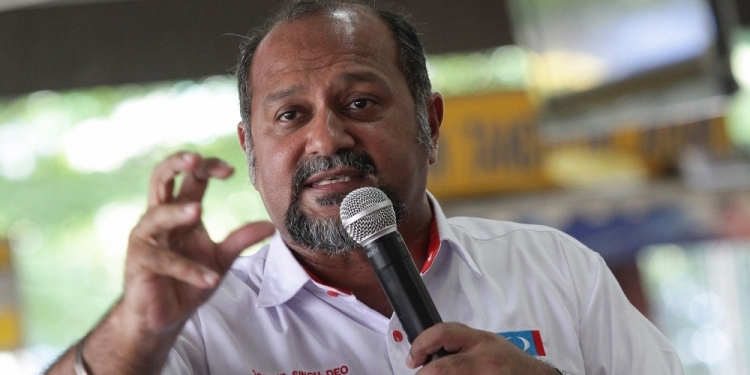When Gobind Singh Deo took over as the Minister of Communications and Multimedia, he vowed to increase our broadband speeds while reducing subscription cost by half. In the past few months, we saw fibre broadband subscription rates getting slashed to an all time low. You can now get a fibre broadband plan from as low as RM79/month and 1Gbps can be enjoyed for as little as RM199/month which is a dream come true for most Malaysians.
As I’ve mentioned previously, cheap broadband isn’t going to solve our biggest problem. Fibre connections are limited to selected urban areas and this leaves many Malaysians stuck with slower and more expensive connections.
Copper is not cost effective
As mentioned in his Facebook post this afternoon, Gobind is aware that there are existing broadband customers that are not getting the price reduction they deserved. On the issue of Streamyx users, he wants to tackle the issue as soon as possible and he wants to meet up with telco representatives to discuss on the matter.
Launched in 2001, Streamyx is a DSL based service that relies on old copper cables. The fastest speed available is 8Mbps and it isn’t as reliable as fibre. To date, there are still more than a million Streamyx customers and TM is still struggling to upgrade as many users as possible to faster speeds.
When TM announced their new Turbo plans, they had revealed that more than 340,000 Streamyx customers are already in Unifi areas and last month, it was reported that half of these customers who are eligible have yet to make the switch to fibre. Another 350,000+ Streamyx customers will be offered 2X speed upgrade which will be done in phases. If you’re a Streamyx customer, you can check if you’re eligible for an upgrade.
TM should also reduce their Streamyx prices but there’s only so much TM could do since copper isn’t as cost effective when compared to fibre. No matter how cheap Streamyx gets, this old technology isn’t going to cut it for today’s demand.
More telcos need to be involved
When it comes to broadband, all telcos have the role to play and TM shouldn’t be left solely responsible to upgrade these Streamyx users. If TM can’t provide faster and a more affordable alternative, other providers should be able to step in. If we take away the 340,000 Streamyx customers who are already in Unifi areas, there’s at least 700,0000 potential new customers for other telcos. Who wouldn’t jump if there’s a better and cheaper alternative?
Wireless as a solution
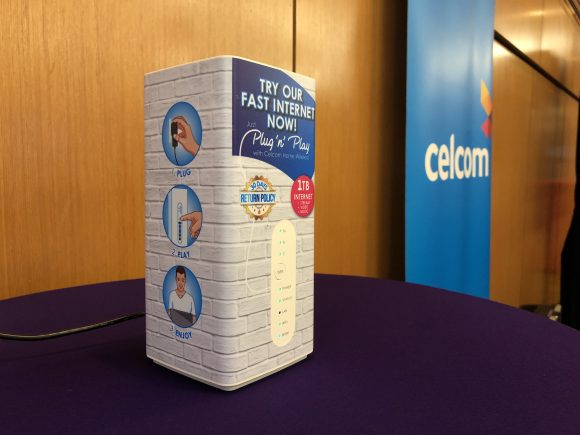
Of course, we don’t expect every single home in Malaysia to be connected by fibre. Laying fibre is a significant investment a provider needs to make and usually it isn’t feasible in low density housing areas. This is one of the reasons why high-rise buildings are preferred by fibre operators compared to landed properties.

Another alternative would be fixed wireless broadband which can be delivered via 4G LTE. It’s possible to hit gigabit speeds on wireless through carrier aggregation. Last year, Celcom claimed to be the first to introduce LTE Advanced in Malaysia with download speeds over 400Mbps with 4×4 MIMO and 256 QAM.
According to Ericsson’s latest Mobility Report dated June 2018, there will be 8.9 billion mobile subscriptions worldwide by 2023 and 95% of that figure will be for mobile broadband subscriptions. If you look at the chart below, fixed broadband subscription is increasing at a slow pace while mobile broadband subscription is growing at a much higher rate.
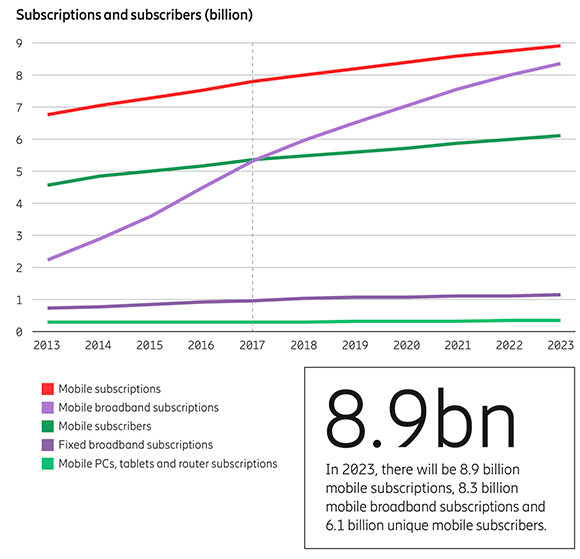
Huawei has also shared the same trend and it is estimated that 1 billion households will be connected via wireless broadband in 2030. It’s mentioned that there are difficulties in increasing household broadband penetration due to lack of infrastructure, higher cost and longer ROI in rural areas. Even in urban areas, there are constraints of civil works or cost of fixed broadband is simply unaffordable for low-income groups.
With WTTx (Wireless to Everything) based on 4G LTE, it is possible to deliver high-speed broadband at a lower cost as it utilises existing mobile network infrastructure. This will be a huge advantage in smaller towns with low population especially in rural areas in Sabah and Sarawak. More Malaysians can get improved speeds at a better price and it can be deployed in a shorter time frame.
WTTx also enables seamless upgrades to 5G which can provide even faster speeds and greater capacity. According to Huawei, WTTx is being deployed in over 100 commercial networks, serving 50 million households in developing and developed markets. For further reading, you can check out both Ericsson’s Mobility Report and Huawei’s white paper on Wireless Broadband.
MCMC’s Universal Service Provision (USP) fund can be utilised to accelerate deployment of wireless coverage in underserved areas. For those who are unaware, all telcos in Malaysia have to contribute 6% of its annual income to the USP fund which is then utilised for improving connectivity and broadband coverage nationwide. This covers a wide range of initiatives including community wifi, 1Malaysia internet centres, upgrading of telecommunication towers and other broadband services. If Gobind wants to make internet a basic human right, the industry should work towards putting an end to 4G blindspots in populated areas.
More Competitive Wireless Broadband plans required
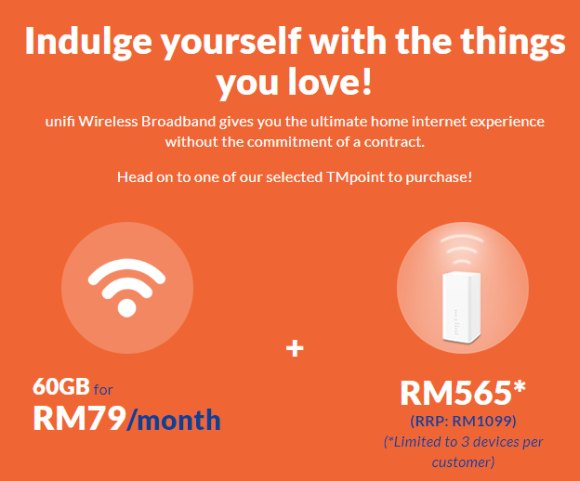
If we look at our telcos today, there are only a handful of plans that provide a true viable alternative to Streamyx. Most WTTx options come with limited quota like TM’s Unifi Wireless plan at RM79/month for 60GB of data and Celcom’s Home Wireless Broadband service that starts from RM70/month with 20GB of data (+40GB for Video Walla). There’s also the Yes 4G LTE Home Broadband Plan at RM99/month that gives you unlimited quota but speeds are capped at 2Mbps.
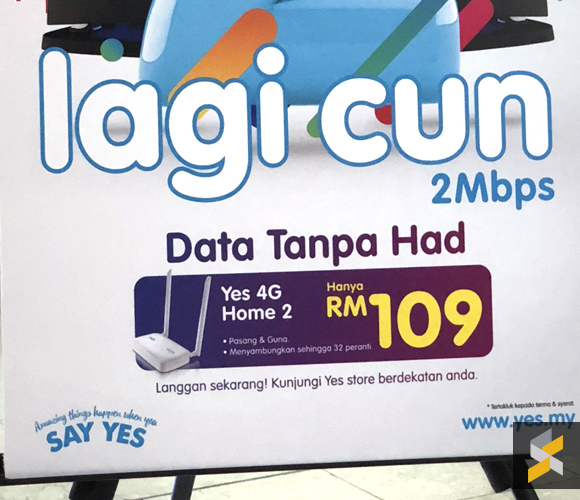
The issue with these plans is that it isn’t available everywhere and we all know that indoor coverage for 4G LTE isn’t consistent in populated areas. According to the latest OpenSignal report, 4G availability for 5 out of 6 telcos are above 75% but only one telco is pushing an average speed above 20Mbps nationwide. Perhaps, it’s time to put more pressure on telcos to improve on coverage and capacity. After all, what’s the point of cheap if the service is crap?
When WiMAX was around, MCMC had penalised operators for underperforming. It was reported that MCMC had slapped 3 WiMAX operators a total of RM3.8 million worth of fines for failing to meet coverage targets.
Don’t forget business users too
Besides home users, business plans should also see a speed upgrade and price reduction as well. At the moment, Maxis is the only telco that has responded with its new business fibre plans that start from as low as RM99/month for 30Mbps with unlimited quota. They are also offering 100Mbps with unlimited calls for only RM139/month. As a comparison, Unifi is still charging RM199/month for 10Mbps for business and TIME business plans start from RM188/month for 20Mbps.
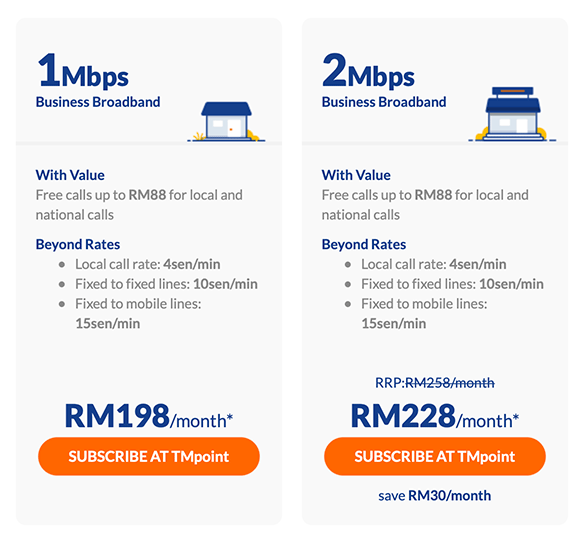
What’s even more pathetic is that Streamyx is still charging RM198/month for a 1Mbps business plan.
How can we get more Malaysians to enjoy faster and cheaper broadband? Do leave your comments down below.

